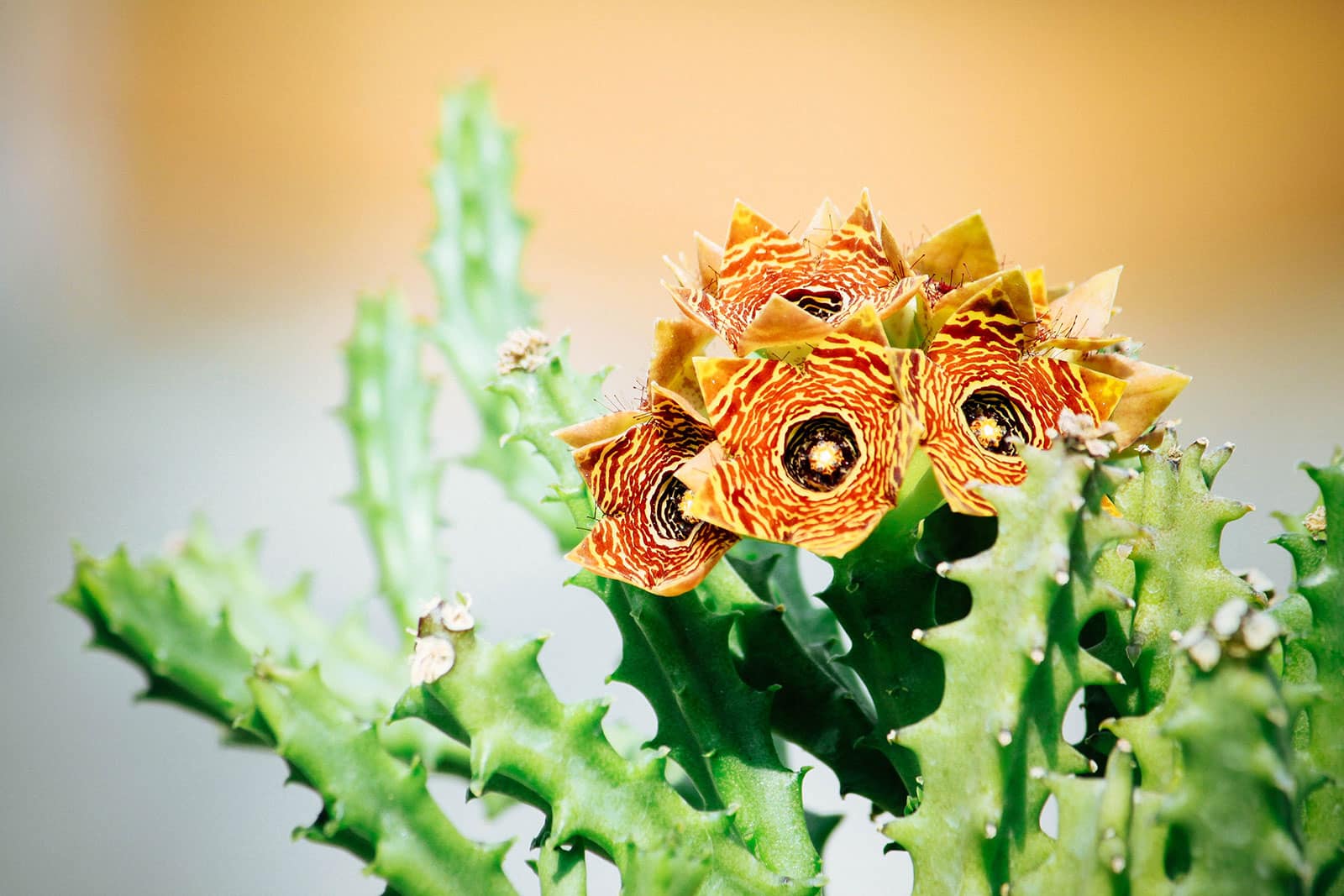Looking for a pretty houseplant to liven up your home a little? But one you won’t feel guilty for leaving when you’re away on vacation? Consider a low-maintenance succulent!
There are hundreds of beautiful flowering succulents out there that produce colorful blooms at different times of the year. Some even flower during winter!
Related: 9 Cactus Varieties With Amazing Flowers: Blooming Houseplants You’ll Love
Let’s have a look at 9 of my favorite flowering succulents below. Who knows, your dream plant may just be in there!
Disclosure: If you shop from my article or make a purchase through one of my links, I may receive commissions on some of the products I recommend.
Best places to buy succulents:
Kalanchoe blossfeldiana
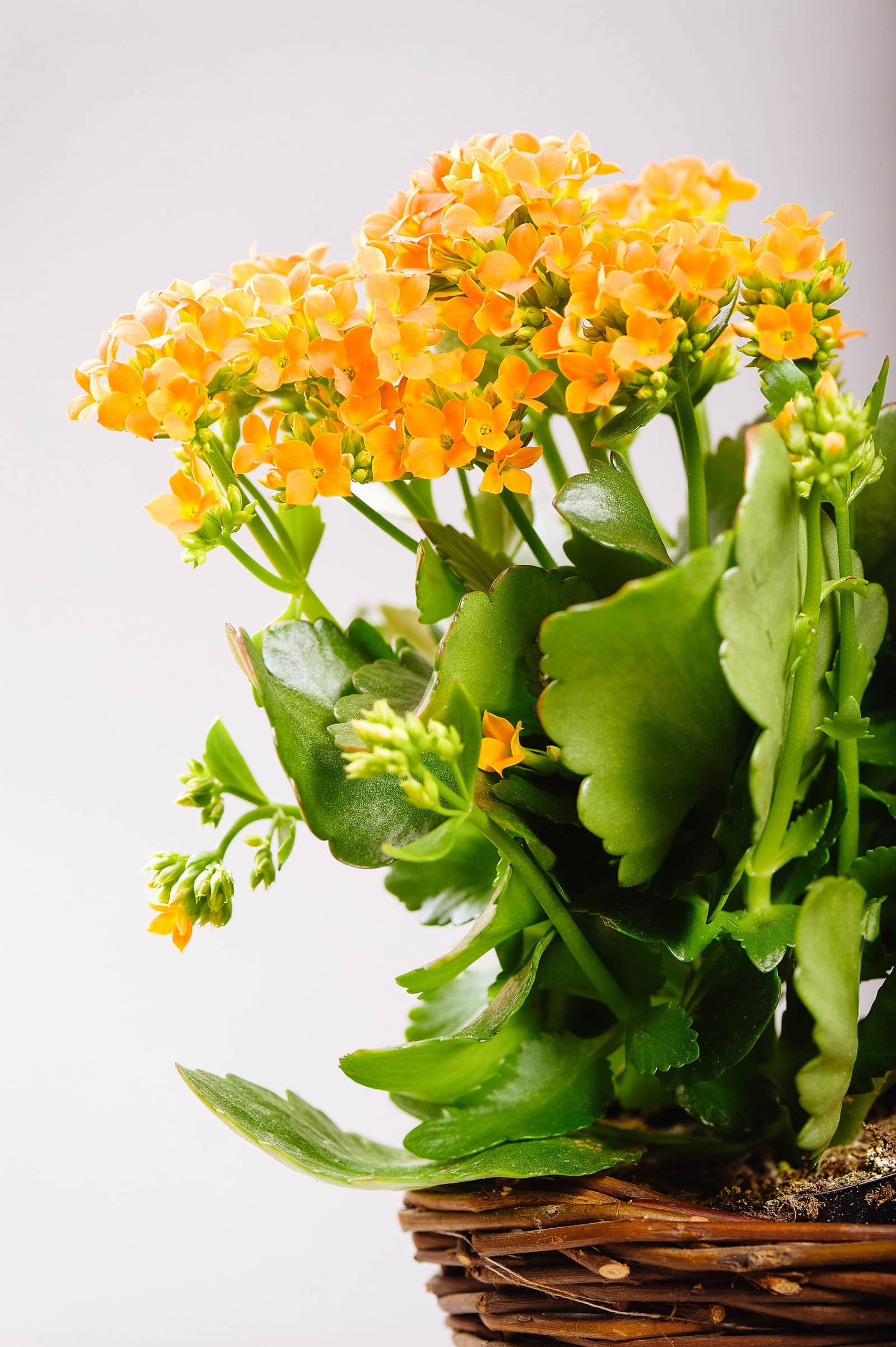
Let’s go ahead and start off strong with one of the most popular flowering succulents out there: Kalanchoe blossfeldiana, originally from Madagascar.
Its fleshy, scalloped leaves make this quite a decorative little plant at any time of year, but pay special attention to yours when fall sets in. This is when the shorter days and longer nights begin to trigger its blooming period.
These succulents commonly pop up for sale in big box stores while they flower during the winter months. Unfortunately, most of them end up in the trash bin by the time their blooms die in early spring.
A waste, and unnecessary too! A Kalanchoe can rebloom year after year, no special care needed.
Kalanchoe blossfeldiana naturally sports a multitude of small, orange-red star-shaped flowers. However, thanks to years of selective cultivation, the species is now available in a range of colors: pink, red, white, orange, yellow, and more.
Flower shape can vary as well, with some of the blooms having been bred to produce extra petals. This makes them look almost like tiny roses.
Delosperma sp. (ice plant)

The members of the genus Delosperma are a perfect choice if you’re looking for some ground cover but also want nice flowers.
Also known as ice plants, these succulents are wildly popular in Mediterranean Europe, even though they’re originally from Africa. They form tight mats that reach a maximum height of only around 5 inches high.
The most popular ice plant is Delosperma cooperi, which is known specifically for its lovely blooms. During the summer months, this plant explodes with gorgeous little daisy-like flowers that are originally a pinkish purple in color, although selective cultivation has led to all sorts of different hues.
The ‘Jewel of the Desert’ series, for example, has yellow, red, light pink, and even two-toned flowers!
Did you know? Delosperma cooperi is pretty cold-hardy. It can survive down to around 14°F, making it a good option for outdoor growing in temperatures that other succulents would not survive. Just keep it out of the rain to avoid rot.
Echeveria sp.
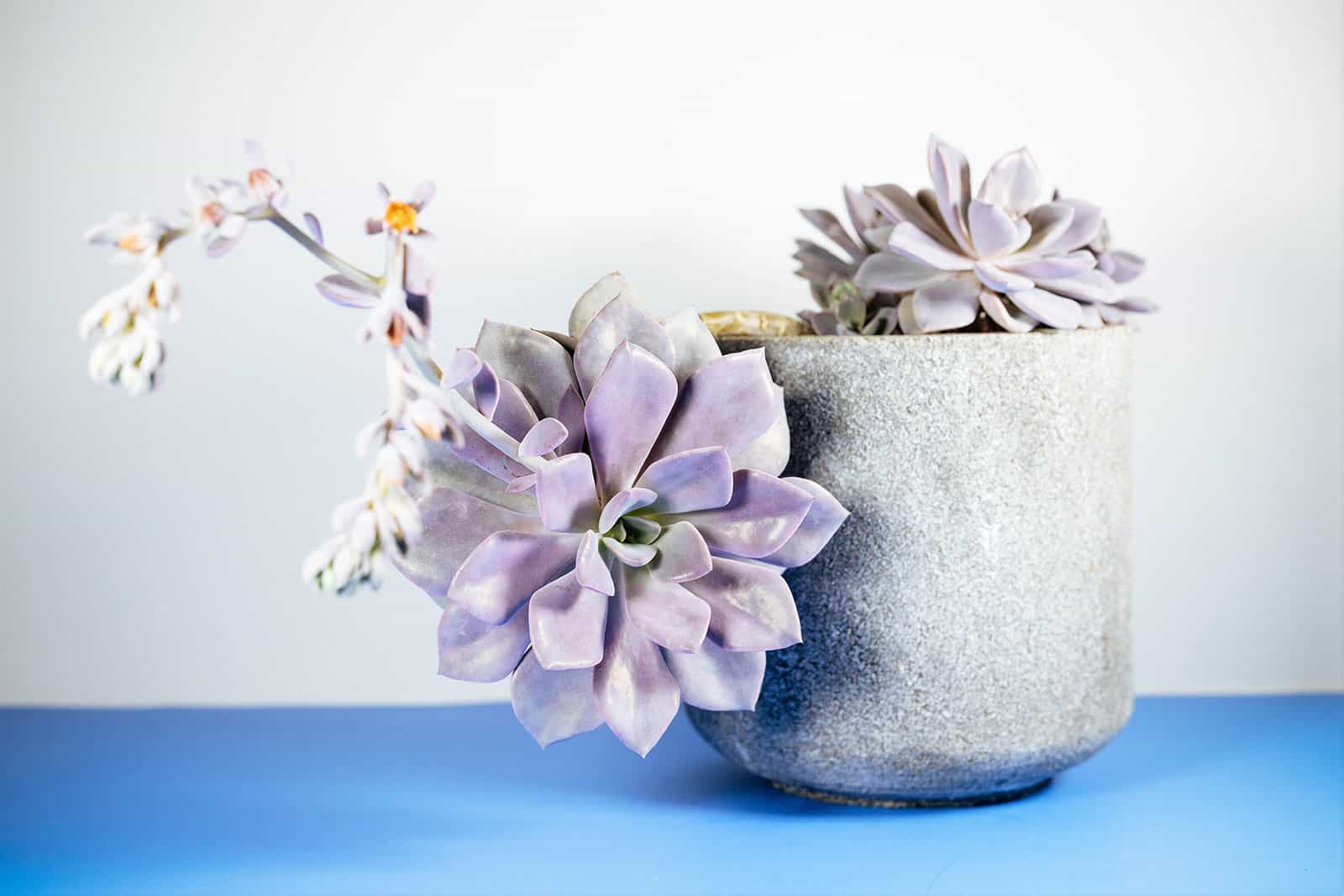
The Echeverias are a genus of around 150 succulents from Central America and Mexico. You’ve probably seen one before, as they’re quite popular as far as houseplants go. Most of this is down to their decorative rosette shape and beautiful colors, but their wonderful flowers are definitely a bonus.
It all starts when, in late summer, you’ll notice a new stem pop up in the heart of your Echeveria. This spike grows and grows, often to more than double the size of the plant itself, and forms a bunch of buds that eventually open to reveal the pinkish-orange flowers. This can be pretty spectacular in some species, especially if multiple flower spikes open at the same time.
In order to get your Echeveria to grow, your best bet is to place it outside in summer. Indoors tends to be a little too dark for these true sun worshippers, which can also lead to them stretching in search of more light and losing their nice rosette shape. Grow lights should work fine as well.
Aloe sp.
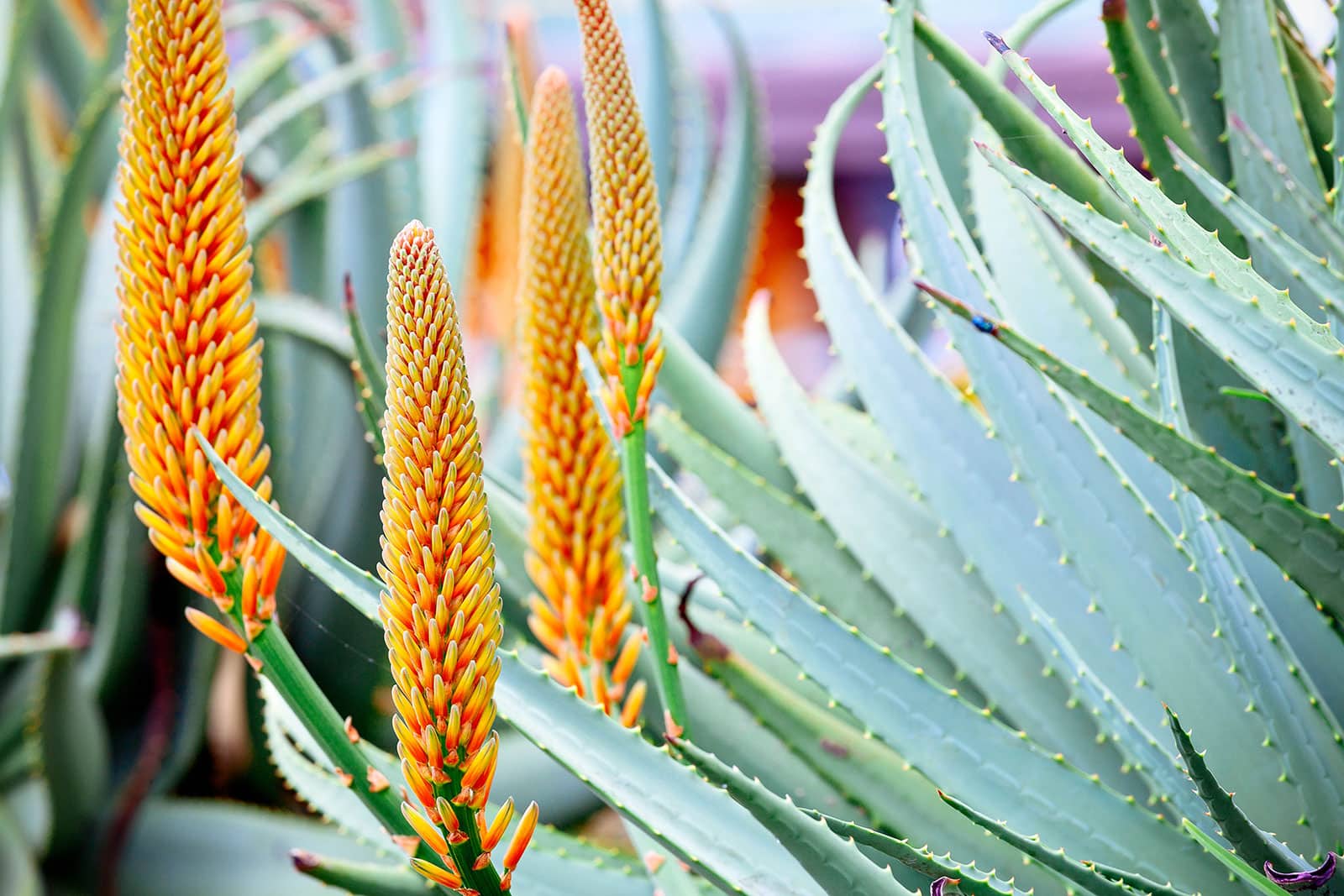
Yep, the members of the popular genus Aloe aren’t just good for the skin. Many of the species, which naturally occur in Africa, are also wildly abundant bloomers!
The long flower spike, tipped with bunches of red to orange flowers, usually pops out in the summer or fall. The spectacle generally lasts for at least a month.
Because Aloes can make do with a little less light than most other succulents (though they do still appreciate plenty of sun), they can do pretty well on your indoor windowsill. With the right care, you can usually expect the first flowers within a year or two.
There are more than 500 species of Aloe, but a few of my personal favorites include the tree Aloe (Aloe arborescens), the coral Aloe (Aloe striata), and the spectacular spiral Aloe (Aloe polyphylla). And yes, the ubiquitous Aloe vera actually blooms pretty nicely as well!
Pachyphytum sp. (moonstone succulent)
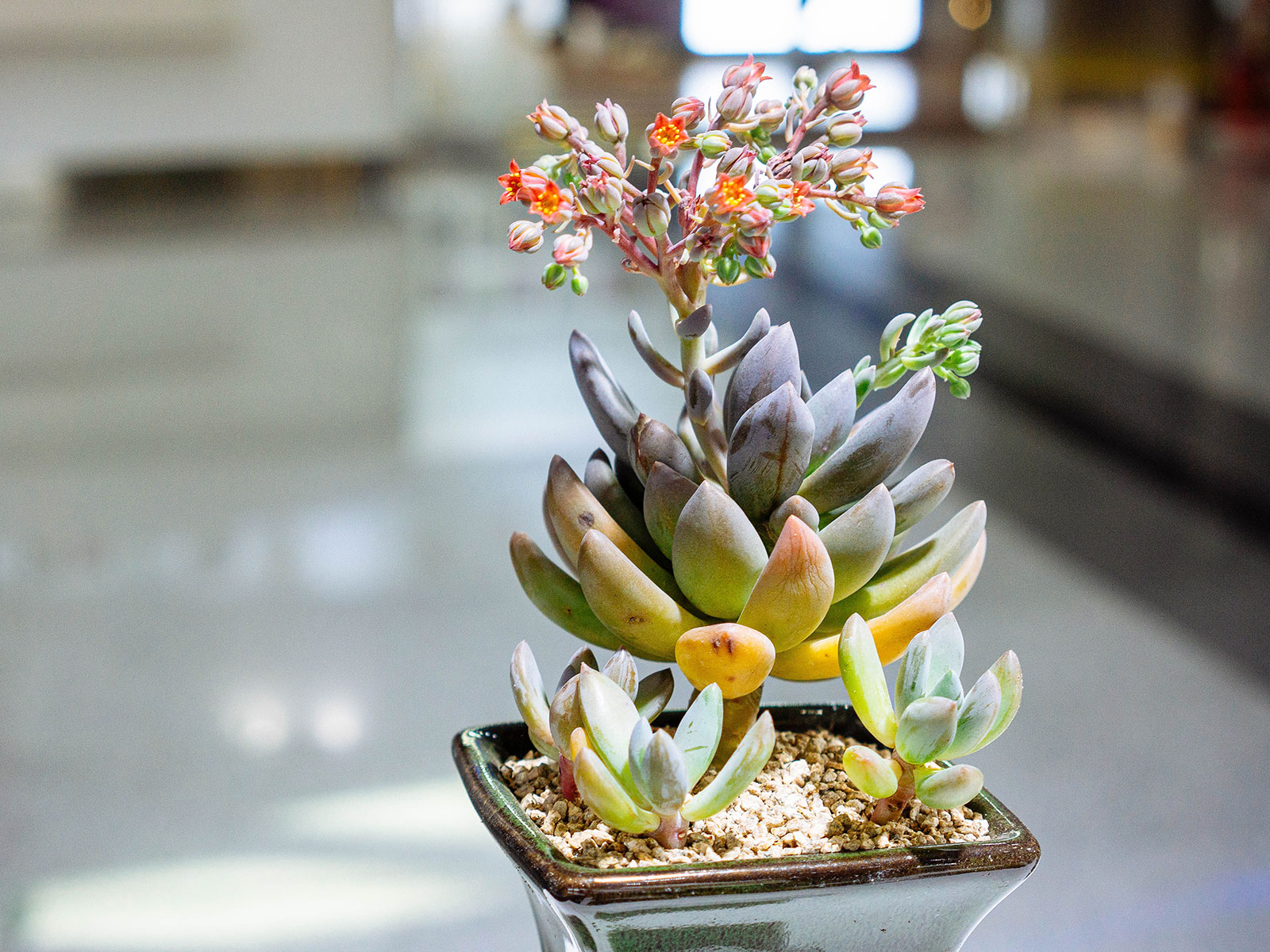
Okay, this may not be the most spectacular bloomer—and certainly not the biggest—but I just love that look of a tiny little succulent with a ridiculously large flower spike.
Pachyphytum flowers are neutral in color on the outside, but bright red on the inside! The bunches of buds begin to develop when temperatures start rising in spring.
The most popular member of the genus Pachyphytum is P. oviferum, which is also called the moonstone or Mentos succulent due to the unusual round shape of its foliage. This little rosette succulent from Mexico stays quite small and is easy to grow as long as you provide it with enough sun.
Originally, Pachyphytum oviferum is a greyish blue in color with yellow to green flowers, but nowadays there’s also a pastel pink cultivar with matching rose blooms.
Did you know? Nurseries don’t just select succulents based on color. They also cross different species to create entirely new plants! One example is the “Pachyveria”, a hybrid between the moonstone succulent and an Echeveria species.
Euphorbia milii (crown of thorns)

You may not realize it due to the woody stems and not all too fleshy leaf texture, but the crown of thorns (Euphorbia milii) really is a succulent. This species has been a staple in the houseplant hobby for years.
That’s not just because of its pretty flowers, but also because according to legend, it’s the plant that was used for—you guessed it—Jesus’ crown of thorns.
Thorns or no thorns, I’d say this Madagascar native is the perfect addition to a collection of flowering succulents. It can bloom year-round and is easy enough to care for as long as you give it enough light.
Like many other succulents, it prefers being grown outdoors during the warm summer months, and will usually flower more abundantly as a result.
Euphorbia milii flowers are naturally light red in color. However, as with most of the plants on this list, different cultivars exist. Their flowers can be white, pink or orange, among other colors.
Huernia sp.

If you love the more unusual flowering succulents, the African genus Huernia may just be the perfect addition to your collection.
This plant is naturally pollinated by flies, which are attracted to the color and smell of carrion. The result are funky-looking flowers that don’t always smell all too nice. (Although I’ve smelled worse, like the flowers of a popular houseplant called the purple passion. Ugh!)
Aside from the dramatic star-shaped flowers in tones of red, yellow, and greenish, the plant itself is quite unusual as well. Huernias don’t have leaves, only stems covered in short, soft spikes. Some species can grow very long stems, making them ideal for a nice hanging basket.
The most popular plant in the genus is Huernia zebrina (the lifesaver plant, due to the shape of its flowers). You may also come across H. schneideriana, which has dark red blooms.
Want more? If you like Huernia, also consider a similar genus called Stapelia. They look quite a bit alike, at least until the flowers appear. The blooms on Stapelia are just as gorgeous, but they’re actually even bigger than those produced by their Huernia cousins!
Lithops sp. (living stones)
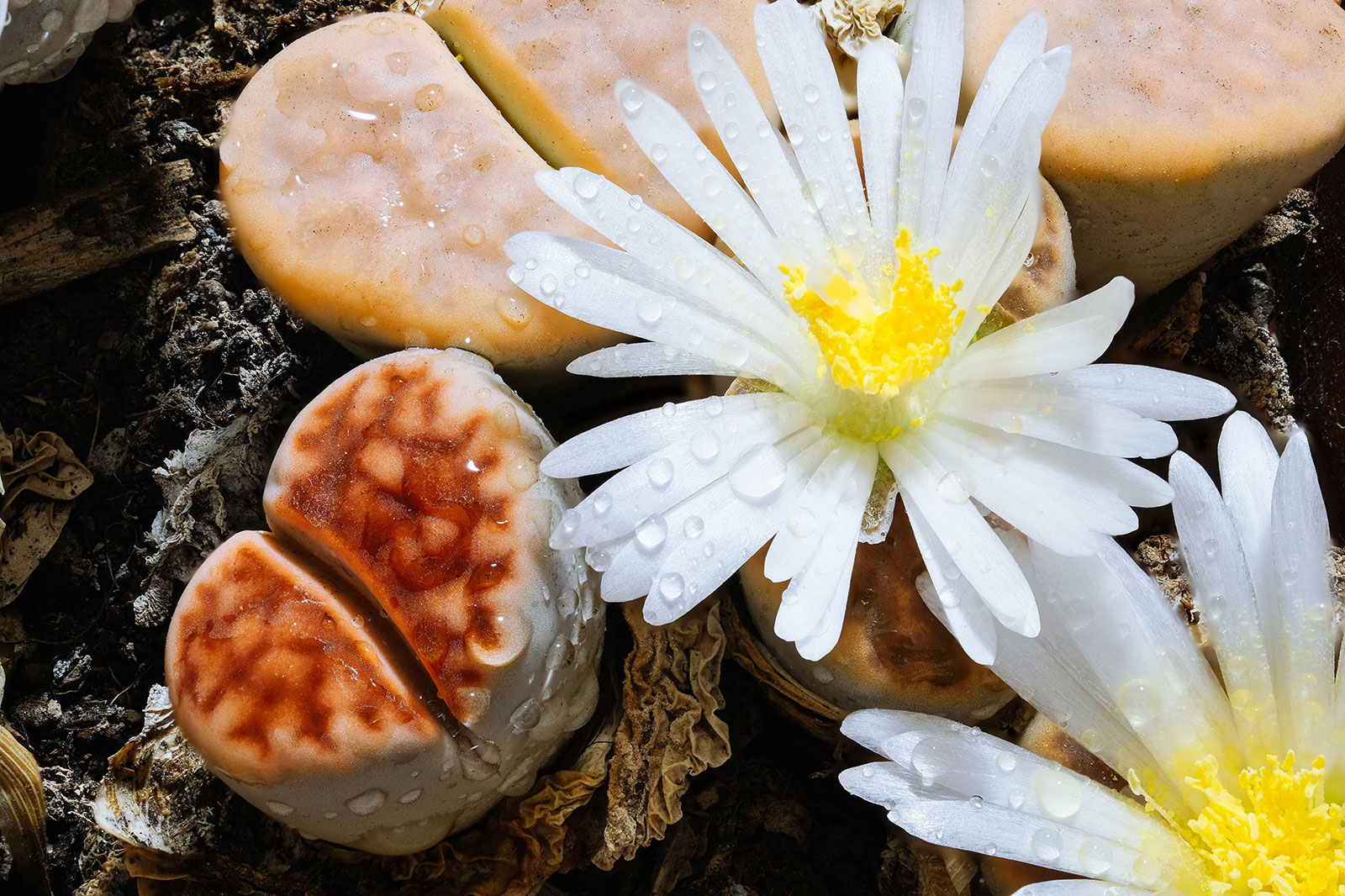
Another truly funky genus of succulents from southern Africa is Lithops, better known as the living stones. These tiny plants really do look just like little pebbles, a form of camouflage they evolved to help them avoid hungry herbivores. Their shape also means they’re perfectly adapted to the arid environments they naturally grow in.
Living stones aren’t the easiest succulents to grow, especially because their yearly rhythms are so different from those of most other plants.
In their natural habitat, summer is way too hot to do much growing. Winter isn’t ideal either. The solution? Only grow in fall and spring! Outside of these periods, it’s best not to water your Lithops too much, as they’re very sensitive to rot. (I should know, as I’ve accidentally killed quite a few of these over the years. Whoops.)
So why would you go through all that effort? Well, aside from the fact that it’s basically like having an actual living pet rock, Lithops also blooms.
Depending on the species, the plant begins to split in either spring or fall, revealing a tiny flower bud. Out of this bud emerges a single wonderful little daisy-like flower, usually yellow or white in color.
Adenium obesum (desert rose)

Here’s another one of those woody-stemmed plants with regular-looking leaves that doesn’t really appear to be a succulent. It definitely is one, though!
If you’re into growing bonsai trees, or if your grandma used to like collecting houseplants, you’re probably familiar with it: Adenium obesum.
This plant is also known as the desert rose thanks to its large, colorful flowers (plus the fact that it naturally grows in arid zones in Africa).
In the wild, this slow grower can become enormous, storing water in its trunk to help it survive droughts. Specimens grown for decorative purposes, on the other hand, are usually kept small on purpose.
There is a mind-boggling array of different desert rose colors out there: red, white, dark purple, yellow, pink, multi-colored and much, much more. The species blooms in spring or summer, with the flowers lasting around a week.
One of the advantages is that you don’t have to wait for your plant to grow up, because a happy desert rose can actually bloom in the first year of its life.
Best places to buy succulents:


